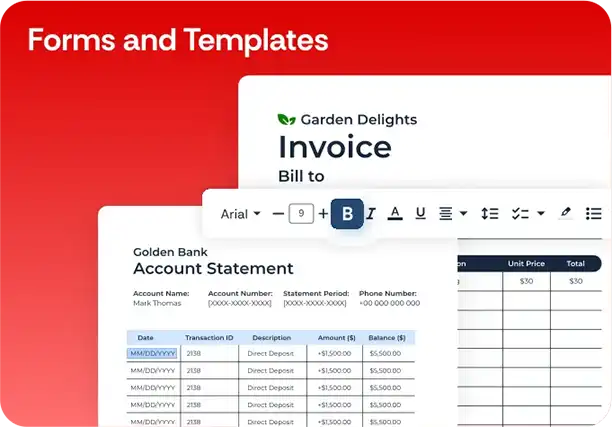NPMA33 Template
Stop searching and find out why people love the ease of creating beautiful and legally compliant NPMA33 with PDFSimpli.

Stop searching and find out why people love the ease of creating beautiful and legally compliant NPMA33 with PDFSimpli.





[toc] When you purchase a property, there are a number of inspections that must be done before the sale is finalized. The NPMA-33 form is one of many inspection forms to fill out. This form records information about wood-destroying insects, otherwise known as WDIs. In some cases, completion of this form is required by the government. In other cases, the form isn’t legally required, but it does serve as an ideal guideline.
The NPMA-33 form is the wood-destroying insect inspection report form. Basically, a home inspector will use the form to denote any evidence they find of wood-destroying insects on a property. The form is the responsibility of the inspector or inspection company.
If a property transaction has been HUD/VA guaranteed, it’s legally required for the NPMA-33 form to be completed by the inspector. Conventional transactions also typically use the NPMA-33 form. In some states, like Texas, this form must be filled out before all property transactions, rather than just HUD/VA ones.
There are other states that have their own regulations and guidelines for inspections. If a state has a state-specific WDI inspection form, the inspector should use that instead. State-specific forms trump the NPMA-33 form. If there are no state-specific forms, the NPMA-33 form is considered the basic guideline.
According to general inspection practices, the inspector is the one responsible for the form. Alternatively, an inspection company might take responsibility for the form. Any inspector involved in a property transaction of an HUD/VA guaranteed property must use the form. Most inspectors will also use the form during a conventional transaction.
The only time that an inspector would not use the NPMA-33 form is when state-specific guidelines use a different form. Some states have more rigorous inspection guidelines. In these cases, the inspector must adhere to the state inspection form rather than the NPMA-33 form.
[pdf-embedder url=”https://cdn-prod-pdfsimpli-wpcontent.azureedge.net/pdfseoforms/pdf-20180219t134432z-001/pdf/npma33-form.pdf”]An inspector or inspection company should use the NPMA-33 form if the following circumstances are met:
The property transaction has been HUD/VA guaranteed
Alternatively, it’s a conventional property transaction, but the homeowner wants an NPMA-33 inspection report
The state requires NPMA-33 inspection reports to be filled out for all property transactions
There are no alternative guidelines or state-specific forms for the WDI inspection
NPMA-33 forms are most important during property transactions. They are a concise and streamlined way of collecting inspection results. It’s important to have NPMA-33 forms completed along with other inspection forms. If an inspector fails to complete the NPMA-33 form during the inspection, they may have to do another inspection. Alternatively, the homeowner might need to hire another inspection company.
The NPMA-33 form is not required to be filed in all property transactions across the United States. Inspectors should be aware of the guidelines in their state of practice. For people living in Texas, for example, the inspection report must be filed before the property transaction can be completed. However, some other states don’t have a legal requirement for the NPMA-33 form to be completed for conventional property transactions.
The inspector should read through the NPMA-33 form and familiarize themselves with the guidelines before they complete the inspection.
The inspector should fill out the General Information section with information about their company, their own name, and the property and structure being inspected. All fields on this page must be fully filled in.
The inspector should make their inspection notes, checking boxes depending on whether they did or did not find evidence of WDIs. If evidence was found, they will need to denote what type of evidence. They may also need to add notes using the attachments portion of Section V.
The inspector must fill out Section III with their recommendation for whether a treatment should be completed, and if so, what type of treatment is necessary.
If there are any inaccessible areas or obstructions, the inspector should note them in Section IV.
Both the buyer and seller of the property should sign the completed document to note that they understand the results of the inspection.
A WDI inspection is a typical part of closing costs for real estate transactions. Generally, inspections will run between $65 and $100. This does not include the cost of any treatments that the inspector may recommend based on their findings.
Inspectors are mainly looking for any signs of termite infestation. However, termites aren’t the only wood-destroying insects. Carpenter ants and other wood-eating insects can pose a threat to the home. If the inspector finds evidence that any type of wood-eating insect has infested the home, they’ll note it on the report.
NPMA stands for National Pest Management Association. This association is responsible for setting inspection and treatment guidelines for pest infestations.